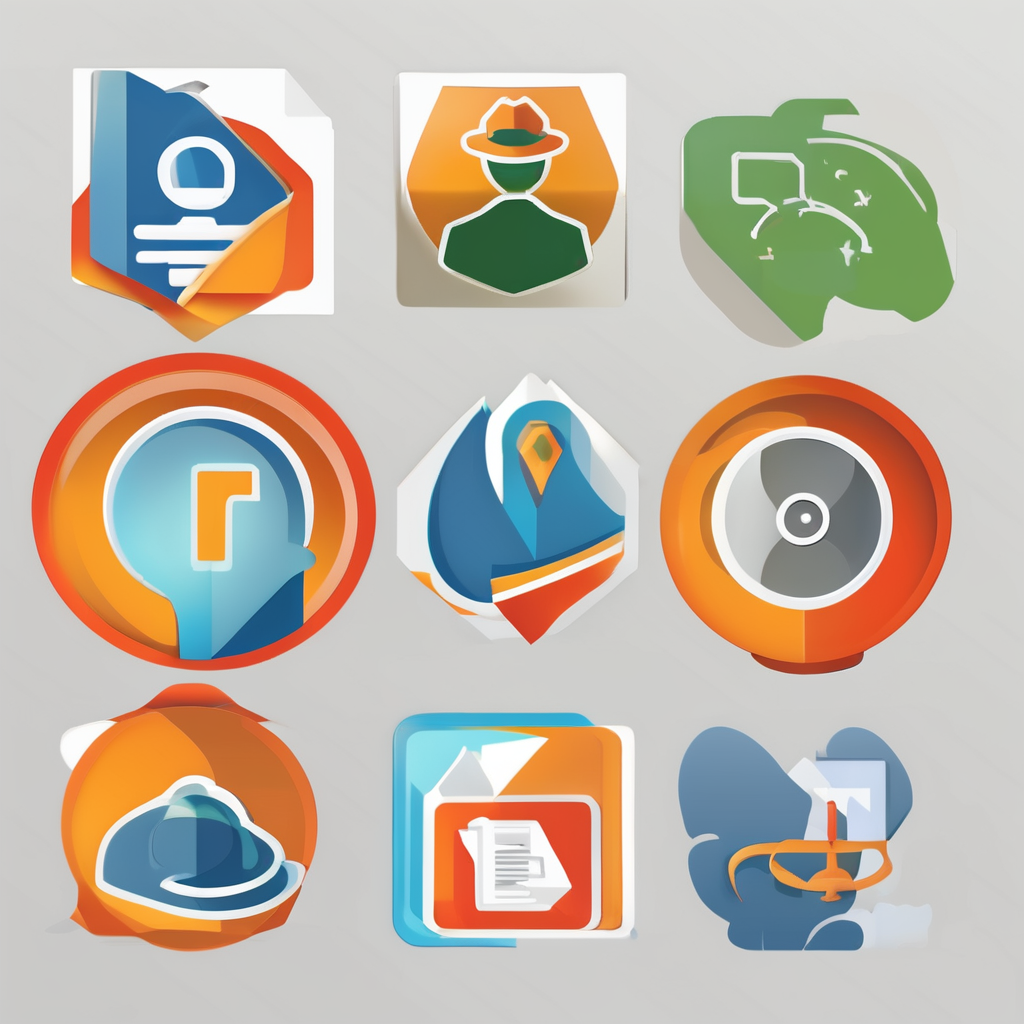Transforming the Gym Experience: How Wearable Tech is Revolutionizing Fitness in the UK
The Rise of Wearable Technology in Fitness
In recent years, the fitness industry in the UK has undergone a significant transformation, largely driven by the advent and widespread adoption of wearable technology. These devices, ranging from smartwatches and fitness trackers to advanced health monitoring wearables, have revolutionized the way people approach their fitness and health.
Wearable technology has moved beyond its initial appeal as a novelty for fitness enthusiasts, evolving into a crucial tool for both individuals and businesses within the fitness sector. Companies like Polar, with their recent launch of the Polar 360 platform, are at the forefront of this revolution. Polar 360 offers a suite of devices that enable employers to monitor vital health metrics such as heart rate, activity levels, and sleep patterns, thereby enhancing workplace wellness and productivity[1].
Also read : Revolutionizing UK Retail Promotions: Effective Augmented Reality Strategies for Retailers
Enhancing Health and Fitness Tracking
One of the most significant contributions of wearable technology to the fitness industry is its ability to provide detailed and real-time health data. Modern smartwatches, for instance, come equipped with a wide array of features including heart rate monitoring, sleep tracking, GPS, and even ECG and blood oxygen level sensors. These innovations have made smartwatches indispensable for users looking to monitor their health and stay connected on the go[2].
Key Features of Modern Wearable Devices
- Heart Rate Monitoring: Continuous tracking of heart rate to monitor physical activity and overall health.
- Sleep Tracking: Detailed analysis of sleep patterns to ensure adequate rest and recovery.
- GPS: Accurate tracking of physical activity, including distance, speed, and route.
- ECG and Blood Oxygen Level Sensors: Advanced health monitoring features to detect early signs of health issues.
- Stress Tracking: Monitoring stress levels to promote mental well-being.
- AI-Powered Insights: Personalized fitness recommendations and predictive health insights based on user data.
Integration with Other Devices and Technologies
The integration of wearable technology with other devices and technologies has further enhanced its utility in the fitness industry. For example, the incorporation of artificial intelligence (AI) and machine learning (ML) in smartwatches allows for personalized fitness recommendations and smart notifications. These AI-powered features can analyze a user’s behavior, physical activity, and health data over time, offering tailored advice that enhances the user experience[2].
Have you seen this : Top Digital Resources for UK Event Planners: Streamline Your Event Management Process
The Role of 5G and IoT
The expansion of 5G connectivity and the integration of wearable devices into IoT ecosystems are set to drive further innovation. With 5G, wearables can support faster, data-rich applications such as remote patient monitoring and real-time health data transmission. This connectivity also enables seamless integration with other smart devices, creating a holistic health and fitness ecosystem[2].
Impact on Gym Experiences and Personal Training
Wearable technology is not only changing how individuals track their fitness but also how gyms and fitness professionals operate. Here are some ways wearable tech is transforming the gym experience:
Real-Time Feedback and Personalized Training
Wearable devices provide real-time data that can be used to tailor personal training sessions. Fitness professionals can use this data to adjust workout routines, ensuring that each session is optimized for the individual’s health and fitness goals. For instance, a trainer can use heart rate data to determine the intensity of a workout and make adjustments accordingly.
Enhanced Performance Monitoring
Wearable technology allows for the continuous monitoring of physical activity and health metrics, enabling gym members to track their performance over time. This long-term data can help identify trends and areas for improvement, making it easier to set and achieve fitness goals.
Virtual and Augmented Reality Training
The integration of wearable technology with virtual and augmented reality (VR/AR) is opening up new avenues for immersive fitness experiences. For example, head-mounted displays (HMDs) can enhance training and simulation in various fitness contexts, offering users a more engaging and interactive way to exercise[1].
Benefits for Gym Members and Businesses
The adoption of wearable technology in gyms offers numerous benefits for both members and the businesses themselves.
Improved Health and Wellness
For gym members, wearable devices provide a comprehensive view of their health and fitness, enabling them to make informed decisions about their physical activity and lifestyle. This can lead to improved overall health and wellness, as well as better adherence to fitness routines.
Increased Engagement and Retention
Gyms can use wearable technology to enhance member engagement and retention. By offering personalized training programs and real-time feedback, gyms can provide a more satisfying and effective fitness experience, encouraging members to continue their memberships.
Business Efficiency and Growth
From a business perspective, wearable technology can help gyms streamline operations and improve efficiency. For example, real-time data can be used to optimize class schedules, manage equipment usage, and provide targeted marketing campaigns to members.
Challenges and Future Trends
While wearable technology has revolutionized the fitness industry, there are several challenges and future trends to consider.
Data Privacy and Security
One of the significant challenges facing the widespread adoption of wearable technology is data privacy and security. As these devices collect vast amounts of personal health data, ensuring that this information is secure and protected is crucial. Companies must invest in robust security measures to safeguard user data[1].
Cost and Accessibility
Another challenge is the cost and accessibility of wearable devices. While the market is growing, with the wearable technology market expected to reach $198.83 billion by 2032, high upfront costs can still be a barrier for many consumers. Efforts to make these devices more affordable and accessible will be key to their continued growth[1].
Future Innovations
Looking ahead, several trends are set to shape the future of wearable technology in fitness:
- Advanced Sensors and Health Metrics: Expect further advancements in sensors and health metrics, such as wearable heart sound devices that can detect early signs of cardiovascular diseases[4].
- AI and ML Integration: Continued integration of AI and ML will provide more personalized and predictive health insights.
- Virtual and Augmented Reality: Increased use of VR/AR in fitness training for more immersive and engaging experiences.
- Sustainability: A growing focus on sustainability in wearable technology, including eco-friendly materials and energy-efficient designs.
Practical Insights and Actionable Advice
For those looking to integrate wearable technology into their fitness routine or gym business, here are some practical insights and actionable advice:
Choosing the Right Device
When selecting a wearable device, consider your specific fitness goals and needs. For example, if you are focused on heart health, look for devices with advanced heart rate monitoring and ECG features.
Using Data Effectively
Make the most of the data provided by your wearable device. Use real-time feedback to adjust your workouts, and long-term data to track your progress and set realistic goals.
Ensuring Data Security
Always ensure that your wearable device and associated apps have robust security measures in place to protect your personal health data.
Wearable technology is transforming the fitness industry in the UK, offering a wide range of benefits for both individuals and businesses. From enhanced health and fitness tracking to personalized training and immersive VR/AR experiences, these devices are revolutionizing the way we approach physical activity and health.
As the industry continues to evolve, it is clear that wearable technology will play an increasingly central role. Whether you are a fitness enthusiast, a gym member, or a business owner in the fitness sector, embracing wearable technology can lead to improved health, better performance, and a more engaging fitness experience.
Table: Comparison of Popular Wearable Devices
| Device | Key Features | Price Range | Battery Life |
|---|---|---|---|
| Apple Watch | Heart rate monitoring, ECG, GPS, AI-powered insights | £300-£500 | Up to 36 hours |
| Fitbit | Heart rate monitoring, sleep tracking, GPS, stress tracking | £100-£300 | Up to 7 days |
| Polar 360 | Heart rate monitoring, activity tracking, sleep analysis, AI-powered insights | £200-£400 | Up to 5 days |
| Samsung Galaxy Watch | Heart rate monitoring, ECG, GPS, AI-powered insights | £250-£450 | Up to 40 hours |
| Oura Ring | Sleep tracking, heart rate monitoring, activity tracking | £200-£300 | Up to 7 days |
Quotes from Industry Experts
- “Today, fostering well-being is no longer just an individual responsibility — it is a collective effort, where companies, organizations and societies all play a crucial role,” – Sander Werring, CEO of Polar[1].
- “Wearables in the workplace have the potential to revolutionize industries by providing real-time insights, enhancing communication, and improving ergonomics and safety,” – Zachary Robichaud, Instructor at Toronto Metropolitan University[1].
- “Wearable heart sound devices are transforming the landscape of cardiovascular disease monitoring by offering several key advantages over traditional methods,” – Article on wearable heart sound devices[4].
Detailed Bullet Point List: How Wearable Tech Enhances Gym Experiences
- Real-Time Feedback: Provides immediate feedback on heart rate, activity levels, and other health metrics to optimize workouts.
- Personalized Training: Allows fitness professionals to tailor training programs based on individual health and fitness data.
- Enhanced Performance Monitoring: Enables continuous monitoring of physical activity and health metrics to track progress over time.
- Virtual and Augmented Reality Training: Offers immersive and interactive fitness experiences through VR/AR integration.
- Improved Health and Wellness: Provides a comprehensive view of health and fitness, enabling informed decisions about physical activity and lifestyle.
- Increased Engagement and Retention: Enhances member engagement and retention through personalized training programs and real-time feedback.
- Business Efficiency and Growth: Streamlines gym operations and improves efficiency through data-driven insights on member activity and preferences.
- Remote Monitoring and Telemedicine: Enables remote monitoring of cardiovascular health, reducing the need for frequent hospital visits and improving convenience.
- Advanced Health Metrics: Includes features like ECG, blood oxygen level sensors, and stress tracking to detect early signs of health issues.











